The Practice of Chinese Medicine
The Treatment of Diseases with Acupuncture and Chinese Herbs
SECOND EDITION
Giovanni Maciocia CAc (Nanjing)
Acupuncturist and Medical Herbalist, UK
Visiting Associated Professor, Nanjing University of Traditional Chinese Medicine
Foreword by
Steve Clavey, Ph.D., B.Ac., M.B.Ac.C.
Illustrators:
Michael Courtney and Richard Morris
 Edinburgh London New York Oxford Philadelphia St Louis Sydney Toronto 2008
Edinburgh London New York Oxford Philadelphia St Louis Sydney Toronto 2008
Commissioning Editors: Karen Morley, Claire Wilson
Development Editor: Kerry McGechie
Project Manager: Emma Riley
Designer: Charles Gray
Copyright
CHURCHILL LIVINGSTONE ELSEVIER
Am imprint of Elsevier Limited
Giovanni Maciocia 1994
Giovanni Maciocia 2008
The right of Giovanni Maciocia to be identified as author of this work has been asserted by him in accordance with the Copyright, Designs and Patents Act 1988
No part of this publication may be reproduced, stored in a retrieval system, or transmitted in any form or by any means, electronic, mechanical, photocopying, recording or otherwise, without the prior permission of the Publishers. Permissions may be sought directly from Elseviers Health Sciences Rights Department, 1600 John F. Kennedy Boulevard, Suite 1800, Philadelphia, PA 19103-2899, USA: phone (+1) 215 239 3804, fax (+1) 215 239 3805, or e-mail ) by selecting Support and Contact and then Copyright and Permission.
First edition 1994
Second edition 2008
ISBN: 978-0-443-07490-5
British Library Cataloguing in Publication Data
A catalogue record for this book is available from the British Library
Library of Congress Cataloging in Publication Data
A catalog record for this book is available from the Library of Congress
Notice
Knowledge and best practice in this field are constantly changing. As new research and experience broaden our knowledge, changes in practice, treatment and drug therapy may become necessary or appropriate. Readers are advised to check the most current information provided (i) on procedures featured or (ii) by the manufacturer of each product to be administered, to verify the recommended dose or formula, the method and duration of administration, and contraindications. It is the responsibility of the practitioner, relying on their own experience and knowledge of the patient, to make diagnoses, to determine dosages and the best treatment for each individual patient, and to take all appropriate safety precautions. To the fullest extent of the law, neither the Publisher nor the Author assumes any liability for any injury and/or damage to persons or property arising out of or related to any use of the material contained in this book.
The Publisher
Printed in Europe
Foreword
I feel particularly honoured to be asked to pen the Foreword to the second edition of Giovanni Maciocias groundbreaking work, The Practice of Chinese Medicine, because over 30 years ago it was Giovanni himself who encouraged me to take up the study of Chinese medicine. Six years later, after leaving Taiwan, again it was Giovanni who enabled me to study in mainland China.
He recalls neither of these, to me, life-changing impacts; they were simply part of what he does: surveying, cultivating, propagating. What makes his works so popular? Their clarity and system. They are easy to read, using clear everyday English, and are set out in such a way that a busy student, or an even busier clinician, can find the answers needed quickly and efficiently. Another factor in their popularity is the reflection of the cultural context we all of us outside of China share, i.e. working in societies shaped by the dominant paradigm of Western medicine, so that often the presenting complaint is not what the patients themselves feel, but rather a label applied through that paradigm. This is where The Practice of Chinese Medicine excels, providing a clear interface between the Western medicine understanding of a disease entity and the Chinese medicine view and handling of the same patient.
In this, the second edition, there are over 14 new chapters, including a much expanded and in-depth discussion of the psyche in Chinese medicine, with new full chapters on anxiety, depression, chronic fatigue, nausea/vomiting, acid reflux, mouth ulcers, hypertension, prostatic enlargement, interstitial cystitis, thyroid conditions, erectile dysfunction, and more. There is also notable expansion of existing chapters, such as the differentiation and treatment of nasal polyps within the chapter on sinusitis. The chapters on gynaecology, now covered in a specialized text of their own, have not been carried over from the first edition.
This book is about Nei Ke internal medicine which is the guts of any general practice. From Zhang Zhong-Jing to Xu Shu-Wei, Li Gao to Cheng Guo-Peng to name some of the taller trees in our forest there have been many different ways of organizing the description of what happens after a patient sits down in front of you and says: I dont feel good. Giovanni has gone to great lengths to develop as useful a way as possible for Westerners to access the current Chinese medicine understanding of what works best in each condition. Where that understanding is insufficient, he has brought his extensive clinical experience to bear in filling in the gaps and presenting us with his conclusions.
Chinese medicine as a clinical discipline welcomes innovation, creativity; demands it, in fact. As a student, you may need to memorize for exams. When beginning clinic you may need to begin by memorizing a list of patterns for each condition, and their treatments. But though you may start with a list, you should not end up that way, but rather learn to be able to enter into a living understanding of the pathological mechanisms operating in your patients, and in the environment and society around you both.
New theory, therefore, should not be a big surprise we should all be producing it. Giovanni has invested his clinical heart and soul in the pages of this book, and the reader who really wishes to bring this book to life will meet him half way. Work to understand the mechanisms that create the various conditions in your patients, in your context, and try out the tools that are provided here, in the second edition of The Practice of Chinese Medicine.
Steven Clavey
Winter Solstice 2007
Melbourne
PREFACE TO THE SECOND EDITION
It is now 12 years since the first edition of The Practice of Chinese Medicine was published. That first edition was intended to be the companion volume to The Foundations of Chinese Medicine, setting out the application of the theory of Chinese medicine to the treatment of specific diseases with both acupuncture and Chinese herbs.


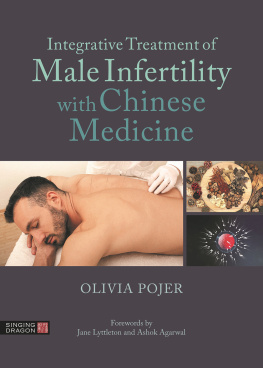

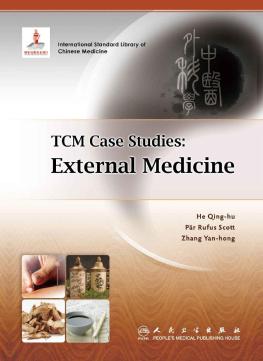
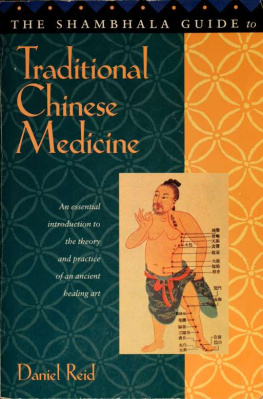
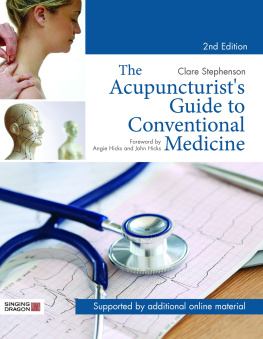
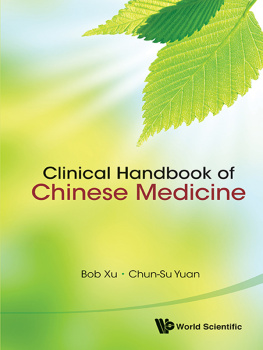

 Edinburgh London New York Oxford Philadelphia St Louis Sydney Toronto 2008
Edinburgh London New York Oxford Philadelphia St Louis Sydney Toronto 2008